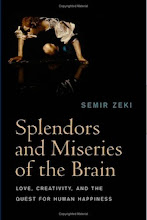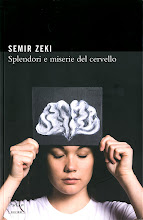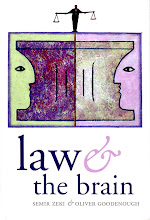Many years ago, in 1983, I published a paper on colour vision, in which I described an experiment that seemed to me to be important. Although the paper has been cited many times, the particular experiment I am referring to has never, to my knowledge, been quoted by anyone. In fact, even I had forgotten all about it until very recently, when someone made what seemed to me to be an inaccurate remark about colour opponency.
Colour opponency refers to the fact that there are three pairs of colours which have been described as those that “cannot live with each other, and yet cannot live without each other”. They are red-green, blue-yellow, and white black. For, as most people know, when we look at a green surface for a brief period of time and then transfer our gaze to a neutral, blank, screen the colour of the after image is red. A yellow surface will produce a blue after image and a white surface a black one.
One explanation of these opponent effects – the one most often repeated – is that they are due to adaptation in the retina. The explanation here is something like this: that a green surface reflects more green light, leading to the adaptation of the “green” or middle wave receptors. Thus adapted, the activity in the opponent “red” receptors holds sway. The result – we perceive red. The same explanation applies to other opponencies.
The experiment I described was derived from, and an extension, of the colour experiments of Edwin Land. Land had shown that a green surface which is part of a complex, multi-coloured, scene can be made to reflect more red light and yet still look green (though a darker shade of green). This is because the brain undertakes a somewhat complex operation to discount changes the wavelength composition of the light reflected from that surface. This makes sense. After all, a green leaf looks green when viewed at mid-day or when viewed at dawn and dusk (when it actually does reflect more of the long-wave or red light). If the perceived colour of the leaf were to change with every change in wavelength composition reflected from it, then the surface would no longer be identified through its colour.
It seemed to me interesting to take this one step further and get humans to look at a green surface that was part of a complex scene and get that green surface to reflect more red light (twice the amount of red than of green light). It still looked green. Now, by the traditional explanation, the after image should look green, because the “red” receptors, having adapted, would defer to the “green” receptors, which had not been as vigorously stimulated and hence had not adapted. Not a bit of it. The after image was red! I repeated this experiment with other colours and got the same general result. The after image is not related to the wavelength composition of the light reflected from a surface. Rather, it is strongly dependent upon the colour of the surface viewed. Since the colour of a surface, when part of a complex scene, is independent of the wavelength composition of the light reflected from it alone, it follows that the colour of the after image is also independent of the wavelength composition of the light reflected from that surface.
Hence the colour of the after image is constructed by the brain after the colour is constructed. It has nothing to do with retinal adaptation.
But no one has taken the slightest notice of this experiment and, as I said, even I forgot about it. That is a pity. It still seems to me to be an important experiment, but evidently no one shares my view.









 Contact us
Contact us